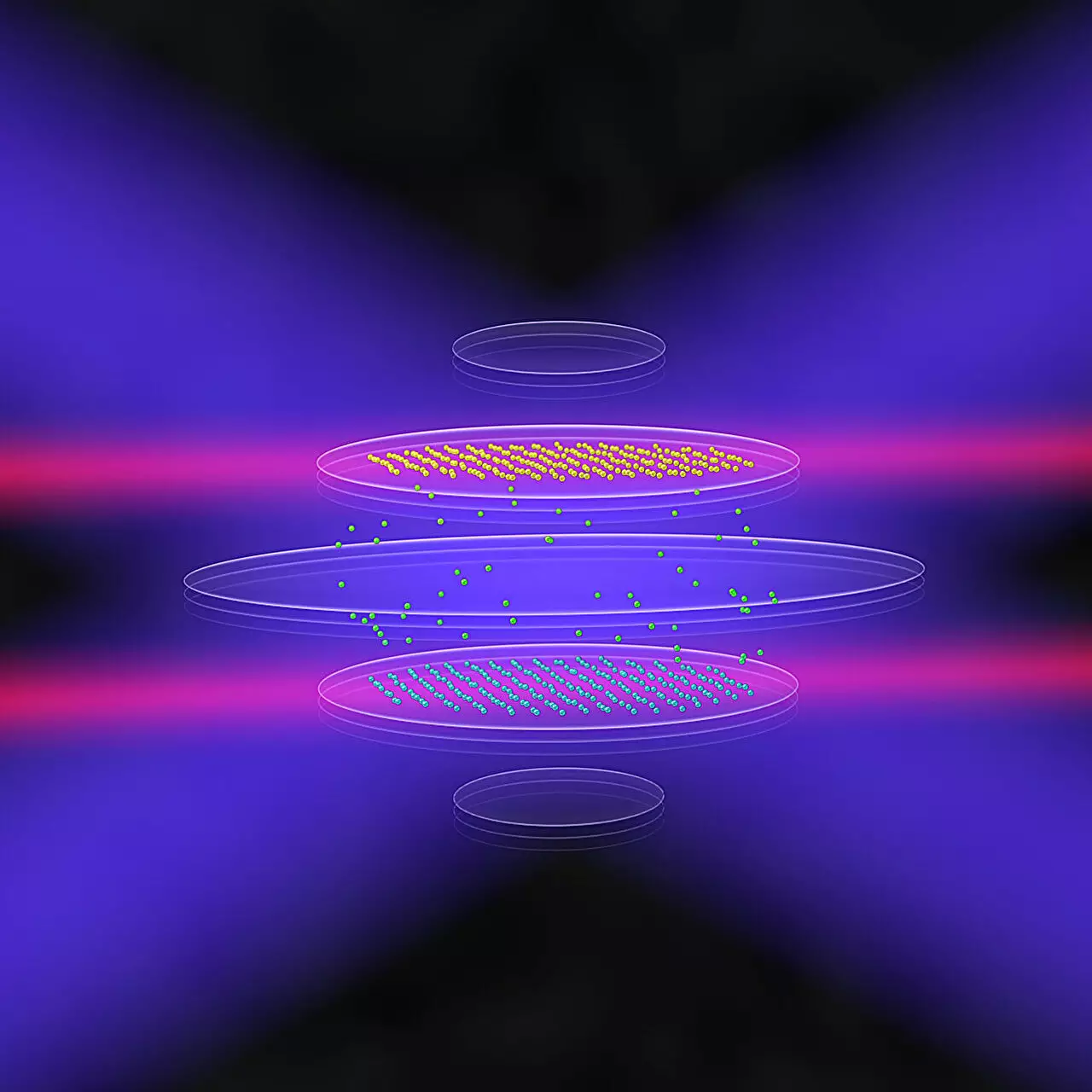The frontier of quantum computing has long been defined by the delicate manipulation of quantum bits, or qubits, primarily utilizing ions or charged atoms confined by electric and magnetic fields. Despite their potential, current trapped-ion systems predominantly operate within limited two-dimensional planes or one-dimensional chains, which imposes severe constraints on scalability and operational versatility. The aspiration to engineer ions into three-dimensional arrangements has captivated researchers for years; however, the inherent complexities involved in maintaining stability and control in such configurations pose considerable challenges. The recent work by an international consortium of scientists, primarily from India, Austria, and the United States, marks a pivotal step towards overcoming these obstacles.
Focused on advancing the trapped-ion technology landscape, the research led by Ana Maria Rey and her colleagues proposes a groundbreaking approach: manipulating the electric fields in ion traps to create stable multilayered structures. Their findings, published in Physical Review X, herald a new era of possibility for quantum devices, allowing researchers to explore phenomena that were previously beyond reach. Rey aptly notes that by controlling large groups of ions in multiple layers, scientists can delve into new realms of quantum behavior, such as topological chiral modes and teleportation—concepts that could substantially enhance quantum information science.
Trapped ions emerge as leading candidates for quantum computing due to their exceptional controllability and precision capabilities. The ability to manipulate qubits using laser and microwave pulses facilitates the encoding of information within these ions, enabling complex computational tasks. A key aspect of this manipulation is the Coulomb force, which helps in entangling ions, thus enhancing measurement fidelity and mitigating ambient noise. Despite prior advances in forming three-dimensional shapes of ion crystals, achieving a stacked configuration of two-dimensional layers has remained elusive until now.
The team’s exploration centers on the Penning trap, an advanced ion trapping device known for its efficiency in accommodating large quantities of ions. The research presents innovative strategies for modifying the electric fields within the Penning trap, transitioning from simpler 2D arrangements to the more complex bilayer crystal structures. This nuanced manipulation involves adjusting the electric fields based on the ion’s distance from the trap’s center, prompting the ions to organize into a dual-layer system—an exciting development for theorists and experimental scientists alike.
According to Samarth Hawaldar, the first author and researcher at the Indian Institute of Science, “We started to explore ways to realize such structures” due to the stored potential in Penning traps. With a capacity for hundreds to thousands of ions, these traps allow extensive studies in complex configurations that were previously unattainable.
Through comprehensive numerical simulations, the research team successfully demonstrated the viability of the bilayer configuration under defined conditions and hinted at the potential for multi-layered arrangements beyond just two layers. John Bollinger, an experimental physicist involved in the study, expresses optimism about the experiments that could soon follow. “We are excited to try forming bi-layer crystals in the lab,” he stated, indicating the likely redesigns needed in their electrode structures to facilitate these advancements.
This departure from conventional ion trapping methods could significantly enhance the scalability and robustness of quantum devices. The generative prospects of bilayer crystals suggest improved capacities for quantum entanglement, an essential feature for various quantum hardware implementations. Athreya Shankar, a postdoctoral researcher, confirms that such capabilities are crucial for enhancing quantum information processing.
The implications of shifting ion trapping from 2D to 3D are far-reaching, impacting not just quantum computing but also quantum sensing and simulations. The capability to induce complex interactions in layered structures paves the way for unprecedented experimental possibilities, such as mimicking rich behaviors characteristic of electrons within strong magnetic fields under rigorously controlled conditions.
Furthermore, enhanced numbers of ions within these multilayered configurations stand to significantly boost signal-to-noise ratios in measurements, thereby enabling precise estimations of fundamental quantities like time and electric fields. These improvements could play a crucial role in advancing experimental physics and could even facilitate the discovery of new physical phenomena.
As collaboration among researchers from India, Austria, and the U.S. fuels the ongoing evolution of quantum technology, innovative strategies such as those presented in this study are imperative for unlocking the full potential of quantum computing and beyond. The move towards multilayered trapped-ion architectures signifies not only a technical breakthrough but also a promising future laden with possibilities for quantum science. The collaborative efforts represent a noteworthy stride in realizing sophisticated quantum systems that can leverage 3D space more effectively and usher in a new era of technological advancements.

